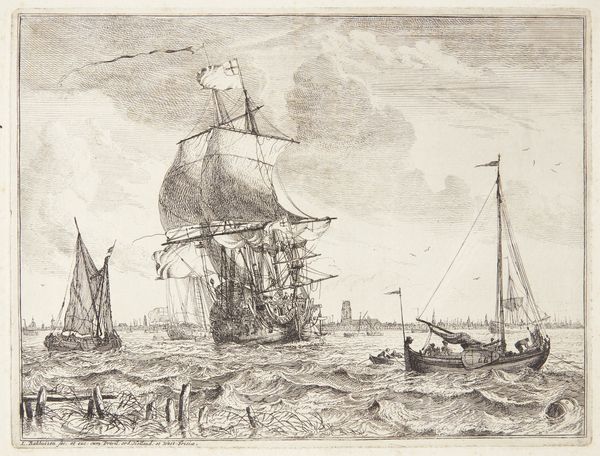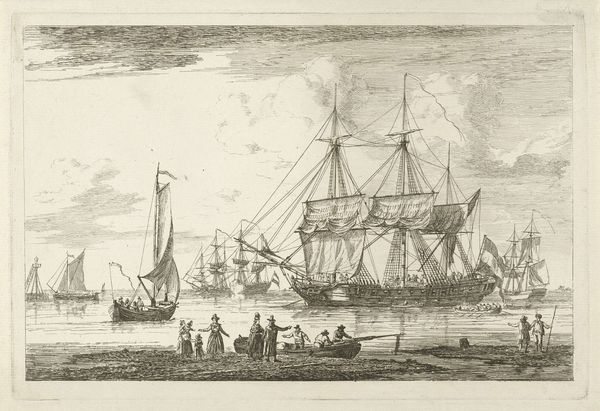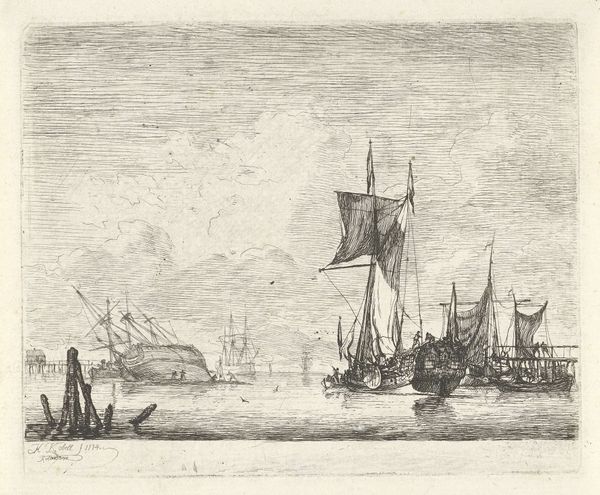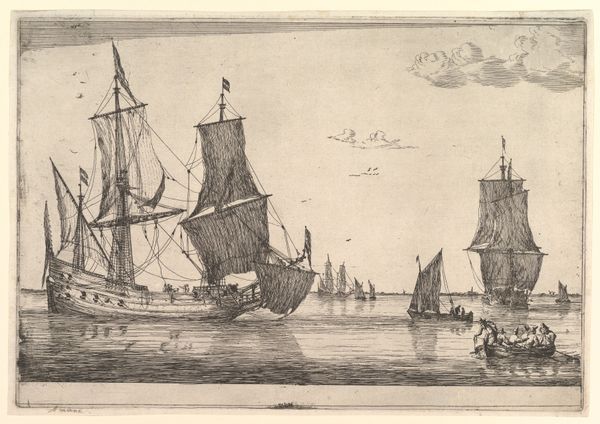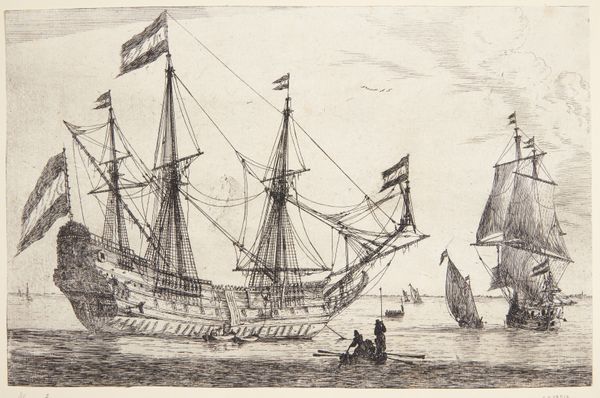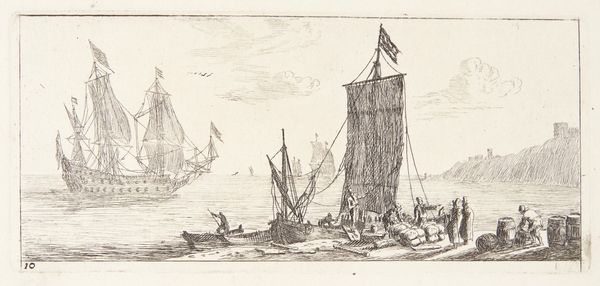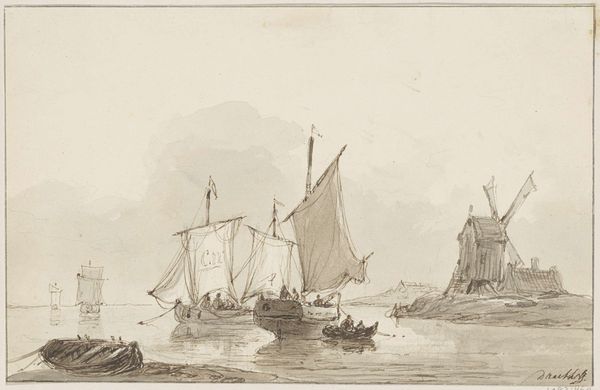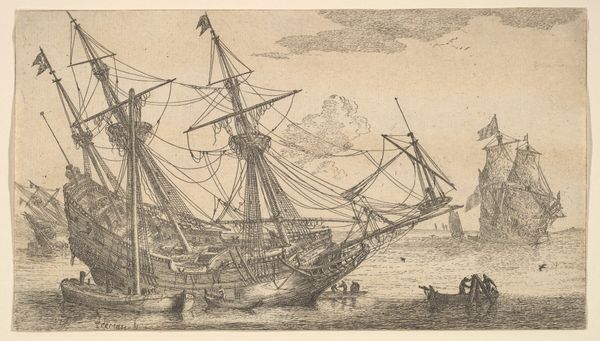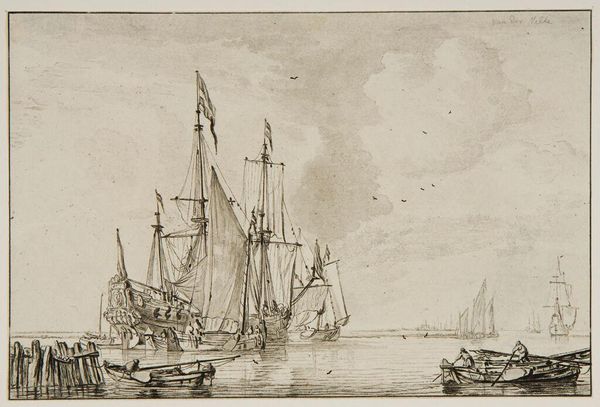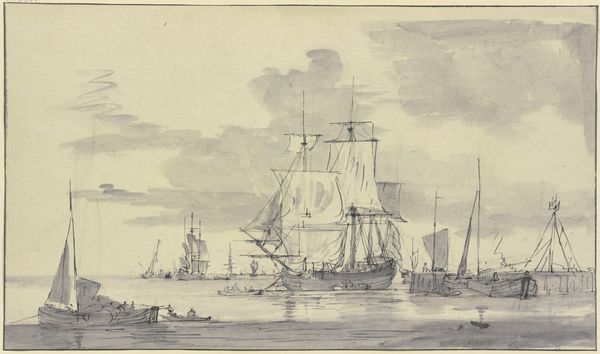
print, etching
#
baroque
#
dutch-golden-age
# print
#
etching
#
landscape
#
line
#
cityscape
#
realism
Dimensions: 177 mm (height) x 237 mm (width) (plademaal)
Editor: This is “Et skib, der kølhales,” or “A Ship Being Keelhauled,” by Ludolf Bakhuizen, from 1701. It’s a print, an etching, and it has this really detailed, almost architectural quality in the rendering of the ships. What's your interpretation of this image? Curator: It's fascinating to consider this work through the lens of Dutch maritime power in the Golden Age. What looks like a simple scene of a ship being careened – that’s ‘keelhauling,’ where the hull is cleaned and repaired – actually represents a key aspect of Dutch economic and naval dominance. The etching itself is a form of reproduction, making images more accessible to a growing merchant class eager to celebrate their maritime success. Editor: So, this image, being a print, would have circulated widely? Did that influence its content? Curator: Absolutely. Bakhuizen was keenly aware of his audience. These kinds of prints, displayed in homes and public spaces, fostered a sense of national pride and reinforced the importance of naval strength. The detail isn’t just aesthetic; it's a visual record, legitimizing Dutch naval expertise. Do you notice how the cityscape in the background seems almost secondary? Editor: Yes, the ships definitely dominate. I was focusing so much on the technique, I didn’t consider its political message. Curator: Think about the institutions supporting artists like Bakhuizen. Wealthy patrons, the admiralty…they all played a role in shaping what was created and how it was disseminated. It's not just about artistic skill; it's about the entire socio-political structure of image production. Editor: So, the image served almost like propaganda for the Dutch navy? Curator: It's more nuanced than simple propaganda. It contributed to a national narrative, reinforcing cultural values related to trade, exploration, and military strength. It shaped public perception of Dutch identity on a global scale. Editor: That's really insightful. I'll never look at a simple seascape the same way again. Thanks! Curator: It highlights the public role of art and the power that imagery can yield; looking beneath the surface gives access to this work’s complete contextual identity.
Comments
No comments
Be the first to comment and join the conversation on the ultimate creative platform.
